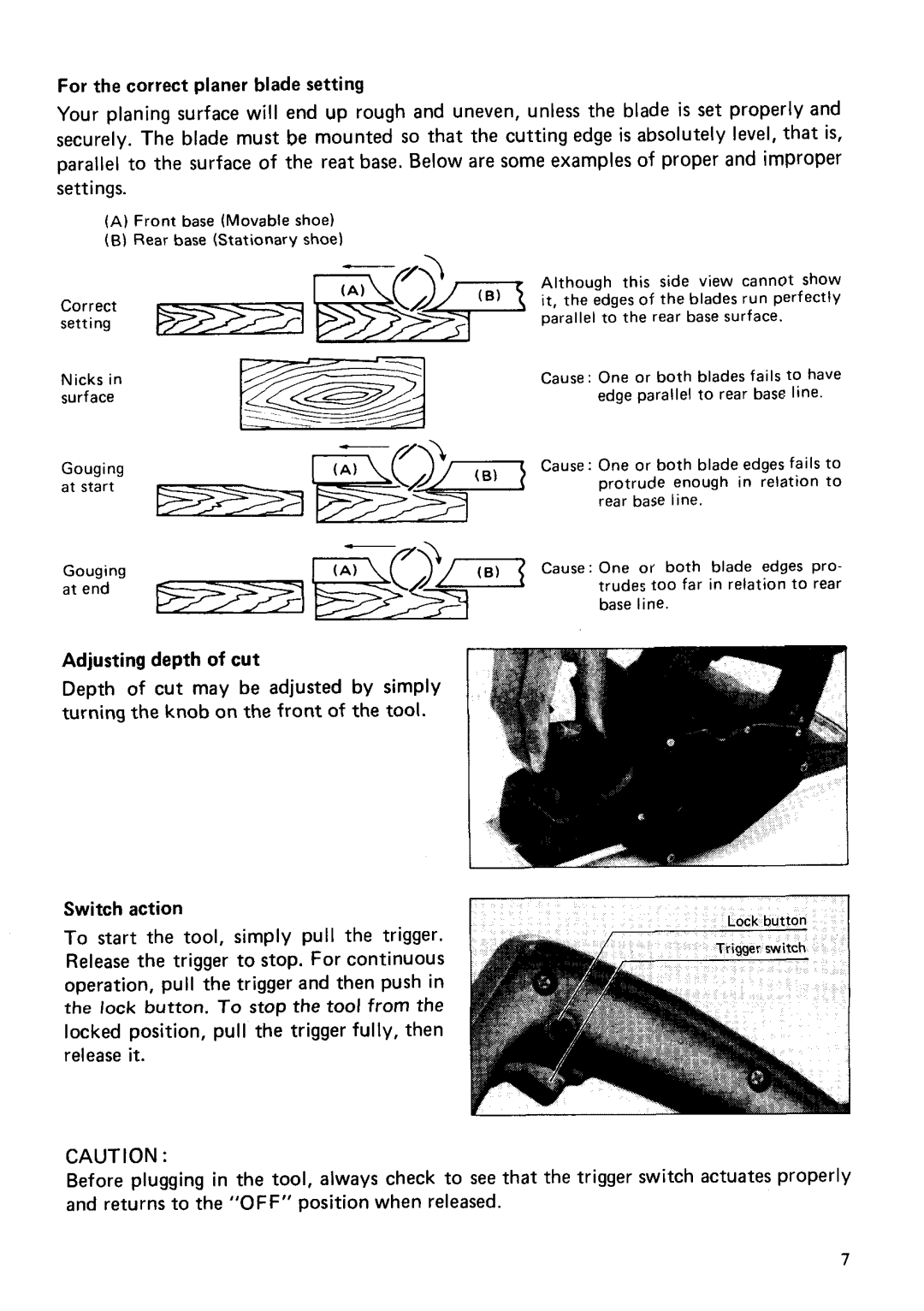
For the correct planer blade setting
Your planing surface will end up rough and uneven, unless the blade is set properly and securely. The blade must be mounted so that the cutting edge is absolutely level, that is, parallel to the surface of the reat base. Below are some examples of proper and improper settings.
( A ) Front base (Movable shoe)
(6)Rear base (Stationary shoe)
| b | z | T |
| Although this side view cannot show | |
Correct |
| it, the edges of the blades run perfectly | ||||
setting | 1 parallel t o the rear base surface | |||||
Nicks in |
|
|
|
| Cause | One or both blades fails t o have |
surface |
|
|
|
|
| edge parallel t o rear base line |
Gouging |
|
|
|
|
| protrude enough in relation t o |
at start |
|
|
|
|
| |
|
|
|
| - |
| rear base line |
|
|
|
|
|
| |
|
|
|
| C ) ' m | Cause: One or both blade edges pro- | |
|
|
|
|
| trudes too far in relation t o rear | |
base line.
Adjusting depth of cut
Depth of cut may be adjusted by simply turning the knob on the front of the tool.
Switch action
To start the tool, simply pull the trigger. Release the trigger to stop. For continuous operation, pull the trigger and then push in the lock button. To stop the tool from the locked position, pull the trigger fully, then release it.
CAUTION :
Before plugging in the tool, always check to see that the trigger switch actuates properly and returns to the "OFF" position when released.
7
